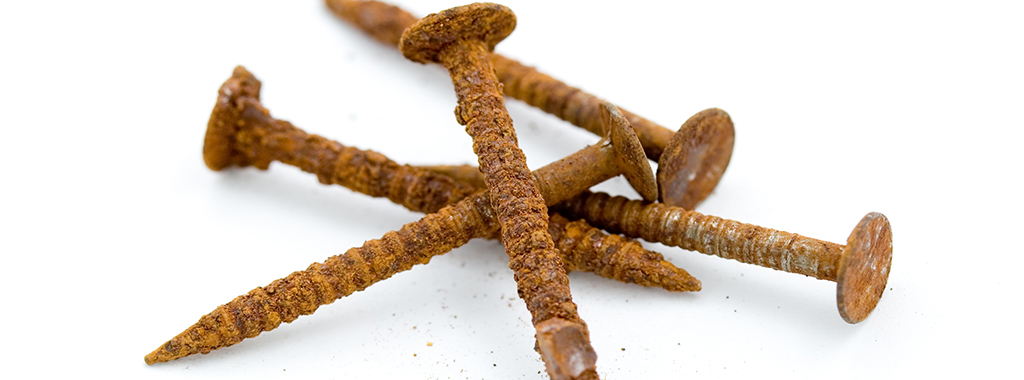Just as knowing the load capacities of your metal hardware is crucial to safeguarding the structural integrity and longevity of your building project, so is understanding the metal’s susceptibility to corrosion. The likelihood of rust and rot increases when you are building outdoors in wet environments or other corrosive conditions. Having a solid awareness of the corrosive threatsposed by the environment and your building materials will help you to choose the fasteners, connectors and anchors that will best mitigate the risk of corrosion and keep your project structurally sound for the long haul.
Start by evaluating the exposure levels in your environment. Is it an interior dry- or exterior wet-service job, for example? Generally, outdoor environments are more corrosive of steel because of the greater moisture levels they present. Projects near the ocean or waterfront are at increased risk for corrosion due to airborne chlorides and salt splash prevalent in marine locales. Salt is also a danger if building materials will be exposed to de-icing salts.
In addition, it’s important to consider whether or not the build is taking place within an industrial zone, or will be exposed to fumes, fertilizers or soil. Any chemicals present in the immediate environment that come into contact with structural hardware could contribute to corrosion.
Another critical step is to assess the materials being fastened. Lumber is often chemically treatedto extend the life of the wood and prevent wood rot. If you’re using lumber that has been treated with a chemical preservative or fire retardant, the hardware you’re using to fasten it becomes more susceptible to corrosion (red rust), and corroded hardware can have reduced load capacity and strength. If you’re in a wet-service environment, you incur additional risk because of the high retention of chemical treatments in wood when high moisture levels are present. The higher the chemical levels retained in the wood, the higher the likelihood of hardware corrosion. Your lumber supplier should be able to provide all information pertinent to treatment chemicals and chemical retention.
Lastly, it’s important when using connectors, fasteners and anchors to select materials and coatings that are suitable for the intended application and environment. Hardware coming into contact with other hardware can result in what’s known as galvanic corrosion. Galvanic corrosion can occur when two electrochemically dissimilar metals have contact with each other in the presence of an electrolyte, such as water. It’s important not to mix metals without understanding their electrochemical interaction. For example, hot-dip galvanized fasteners should not be used with stainless-steel connectors. It’s good practice to use metals with similar electrochemical properties, to separate any dissimilar metals with insulating materials, and to prevent exposure to moisture and other electrolytes to help minimize galvanic corrosion.
As far as hardware material goes, Types 316/305/304 stainless steel; copper; silicon bronze; and hot-dip galvanized (Class C) all offer highly effective protection against corrosion risk. Type 316 stainless steel is the best choice for salt marine and chloride-containing environments, regardless of wood treatment chemicals, because it provides the highest level of corrosion resistance. Our Strong-Drive® SDWH Timber-Hex screw made from Type 316 stainless steelis recommended for wood-to-wood fastening applications when severe conditions demand maximum corrosion protection. For concrete and masonry anchoring applications in coastal or chemical environments, our Type 316 stainless-steel Titen HD® screw anchoroffers long-lasting corrosion resistance. Many of our structural connectors, fasteners and anchors are available in stainless steeland are often used for building decks, docks and other projects that are exposed to more corrosive environments.
To be safe, inspect your hardware throughout the building’s lifetime to see if any corrosion has occurred. This is especially important with structures exposed to weather, such as decks and docks. Check for loose connections, rotted wood and red rust or other signs of corrosion in your connectors and fasteners.
While the many variables contributing to corrosion can make it difficult to predict the precise likelihood, timing and severity of its occurrence, a detailed knowledge of your climate, environment and building materials goes a long way in helping you select hardware that will keep corrosion at bay.







